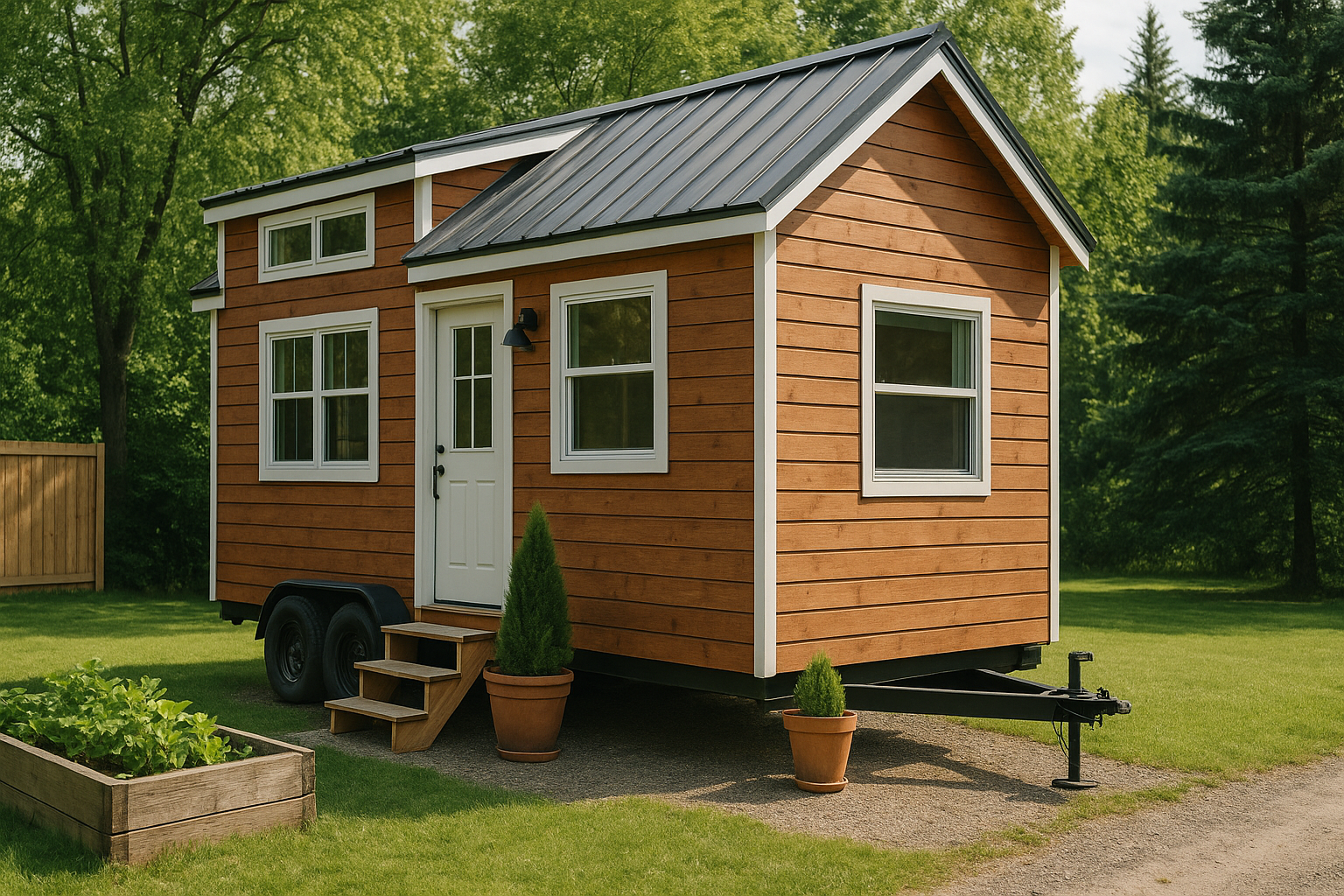
Estimated reading time: 8 minutes
Key Takeaways
- Tiny home permits in Ontario are mandatory to ensure compliance with both local zoning and Ontario building codes.
- Understanding the differences between rural vs urban zoning is essential for a successful permit process.
- The dual permit system—construction and inspection permits—helps confirm that design, construction, and finishing meet all safety and legal requirements.
- Engage early with your local planning department to clarify zoning, design, and permit requirements specific to your property.
- A detailed checklist, including design plans and progressive inspections, is key to avoiding costly delays and legal pitfalls.
Table of Contents
Tiny Home Permits in Ontario: Navigating Rural vs Urban Zoning, Ontario Building Codes, and Tiny House Legality
The interest in tiny home living is reshaping Ontario’s housing landscape. Whether driven by minimalism, sustainability, or affordability, tiny homes are becoming a practical solution. However, before enjoying life in a compact dwelling, it is essential to understand the ins and outs of tiny home permits in Ontario.
Permits confirm that your tiny house complies with both provincial standards and local regulations. They ensure that your construction meets structural integrity, safety guidelines, and zoning demands. For more insights on lifestyle benefits around compact living, check out tiny home living benefits.
Rural vs Urban Zoning: Key Differences and Implications
Municipal zoning laws dictate land use and structure types. The challenge for tiny home enthusiasts is navigating the differences between rural vs urban zoning.
Rural Zoning Considerations
Rural areas usually offer larger lot sizes and flexible density rules, allowing more space for a tiny home. However, minimum lot size requirements, setback rules, agricultural restrictions, and service requirements must be carefully reviewed. Explore more on rural tiny home opportunities.
Urban Zoning Considerations
Urban zoning is often strict, with higher minimum dwelling sizes, neighborhood appearance rules, and limited lot availability. Tiny homes in urban settings are frequently allowed only as accessory dwelling units (ADUs). For detailed ADU regulations and design insights, visit the ADU permitting in Ontario guide.
Tips Before Buying Land for Your Tiny Home:
- Review municipal zoning maps and official documents.
- Contact local planning departments early.
- Confirm any zoning amendments regarding tiny homes or ADUs in writing.
Understanding Ontario Building Codes for Tiny Homes
Complying with Ontario building codes is mandatory regardless of whether your tiny home is built on-site or in a factory. Key requirements include minimum habitable space, functional bathrooms, dedicated kitchen areas, and proper heating, ventilation, and air conditioning systems.
- Minimum Habitable Floor Area: Tiny homes must offer at least 17.5 m² (188 ft²) of liveable space. Refer to the TRREB Tiny Home Fact Sheet for details.
- Functionality: A complete bathroom with shower or bathtub, sink, and toilet is required, as is a dedicated cooking space with running water. More info can be found in the Tiny Home Permits Ontario Guide – Part 2.
- Safety and Structure: All systems must be safe, efficient, and capable of withstanding local environmental factors, including snow loads and wind.
For expert tips on maximizing space and efficiency within these guidelines, see tiny home design tips.
Legality of Tiny Houses in Ontario
Determining the legality of tiny houses in Ontario depends on several factors such as residence type, foundation permanence, and local municipal bylaws.
Foundation Type: Permanent vs Mobile
Tiny homes with permanent foundations are treated similarly to traditional houses, complying fully with building codes. In contrast, modular or mobile tiny homes (often on wheels) are usually limited to seasonal or recreational use. For more details, see the Teacup Tiny Homes: On Foundations FAQ.
Main Dwelling vs Accessory Dwelling
In rural areas, tiny homes can serve as primary residences. In urban settings, they are most commonly recognized as accessory dwellings (ADUs) with specific zoning and service requirements.
Role of Ontario Municipalities in Permitting and Regulation
Each Ontario municipality interprets provincial guidelines uniquely. Progressive towns like Gravenhurst, Hamilton, and Kingston have streamlined processes to accommodate tiny homes, whereas other regions may have ambiguous or outdated bylaws.
Early contact with local planning departments is highly recommended to navigate potential restrictions and obtain clear, written guidance on zoning and permit requirements. For inspiring regional examples, read the Adustart Tiny Home Permits Ontario Guide.
Practical Steps to Secure Tiny Home Permits in Ontario
Securing permits for your tiny home involves careful planning and persistence. Follow this checklist to ensure a smooth process:
- Verify Zoning: Confirm with local bylaws that your property supports tiny homes, whether as a main or accessory dwelling.
- Consult Municipalities Early: Schedule meetings with local planning offices to discuss your project.
- Review Ontario Building Codes: Ensure that your design meets all required standards.
- Prepare Detailed Plans: Work with qualified professionals to produce compliant construction and design drawings.
- Budget for Fees and Inspections: Include all necessary permit fees and professional consultation costs.
- Submit Permit Applications: Apply for both construction and inspection permits as required.
- Schedule Progressive Inspections: Keep detailed records and follow up consistently with municipal inspectors.
- Finalize and Occupy: Once all inspections are passed, your tiny home is legal for occupancy.
For additional guidance on creating sustainable and cost-efficient tiny homes, refer to tiny homes cost and sustainability.
Conclusion
Successfully building and living in a tiny home in Ontario requires thorough research, early consultation with municipal officials, and strict adherence to both zoning laws and building codes. This ensures safety, legal compliance, and the overall success of your project.
Remember:
- Tiny home permits in Ontario cover both construction plans and inspection protocols.
- Navigating rural vs urban zoning will influence your project’s feasibility.
- Compliance with Ontario building codes secures safety and longevity.
- Local municipal regulations vary—early and clear communication is key.
With careful planning, your tiny home can be a legally compliant, functional, and sustainable living space. For a broader look at eco-friendly strategies in home design, check out building an eco-friendly home.
Frequently Asked Questions
Q1: How do I know if my property is zoned for a tiny home?
A1: Begin by reviewing your municipality’s zoning maps and bylaws or contact the local planning department for detailed guidance.
Q2: Can a tiny home on wheels be used as a full-time residence?
A2: In most Ontario municipalities, tiny homes on wheels are classified like RVs or trailers and are typically limited to seasonal or recreational use.
Q3: What professional help should I consider when planning my tiny home?
A3: It is advisable to work with architects, engineers, and zoning consultants to ensure that your design complies with all local building codes and zoning regulations.

Leave a Reply